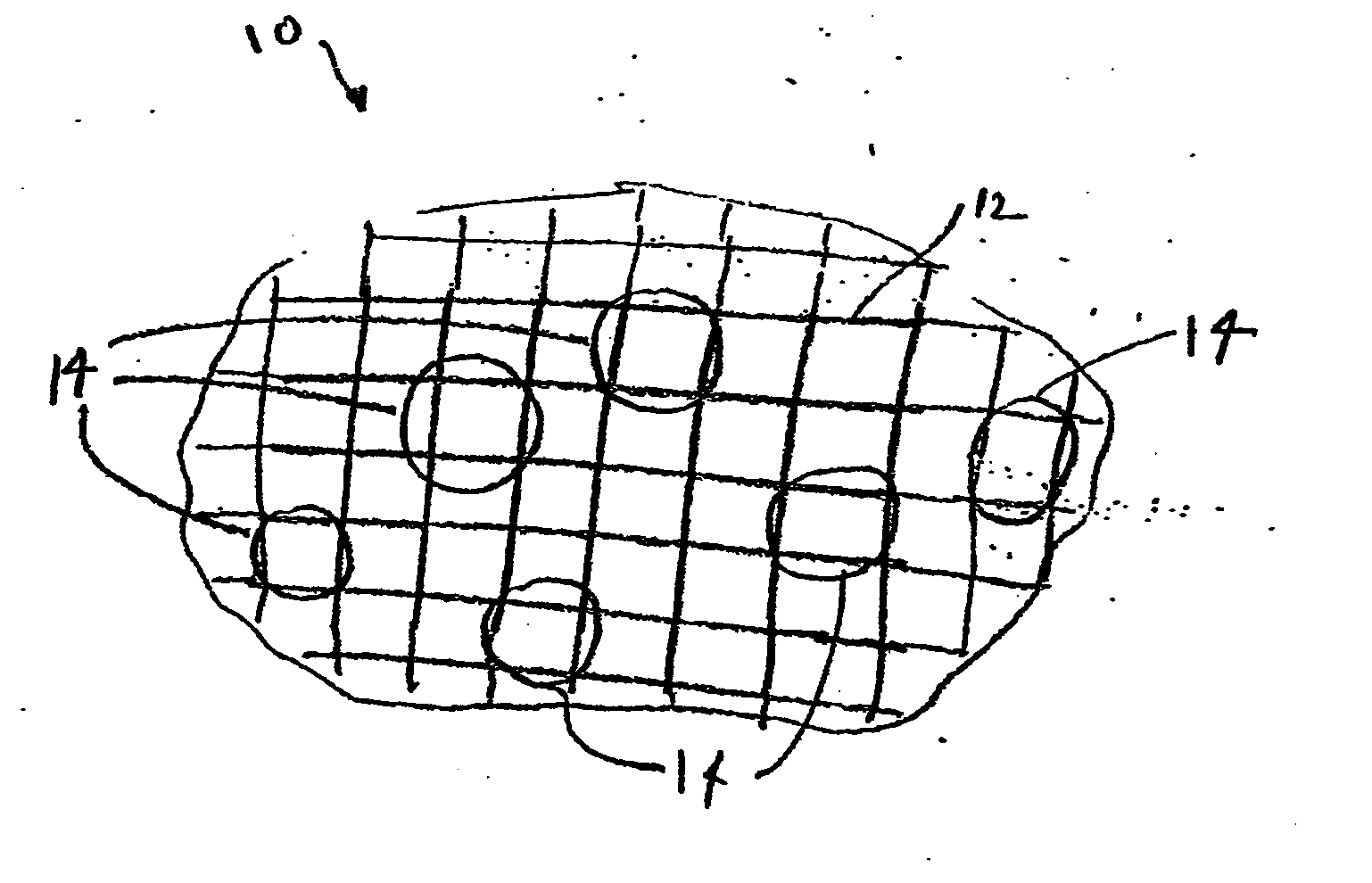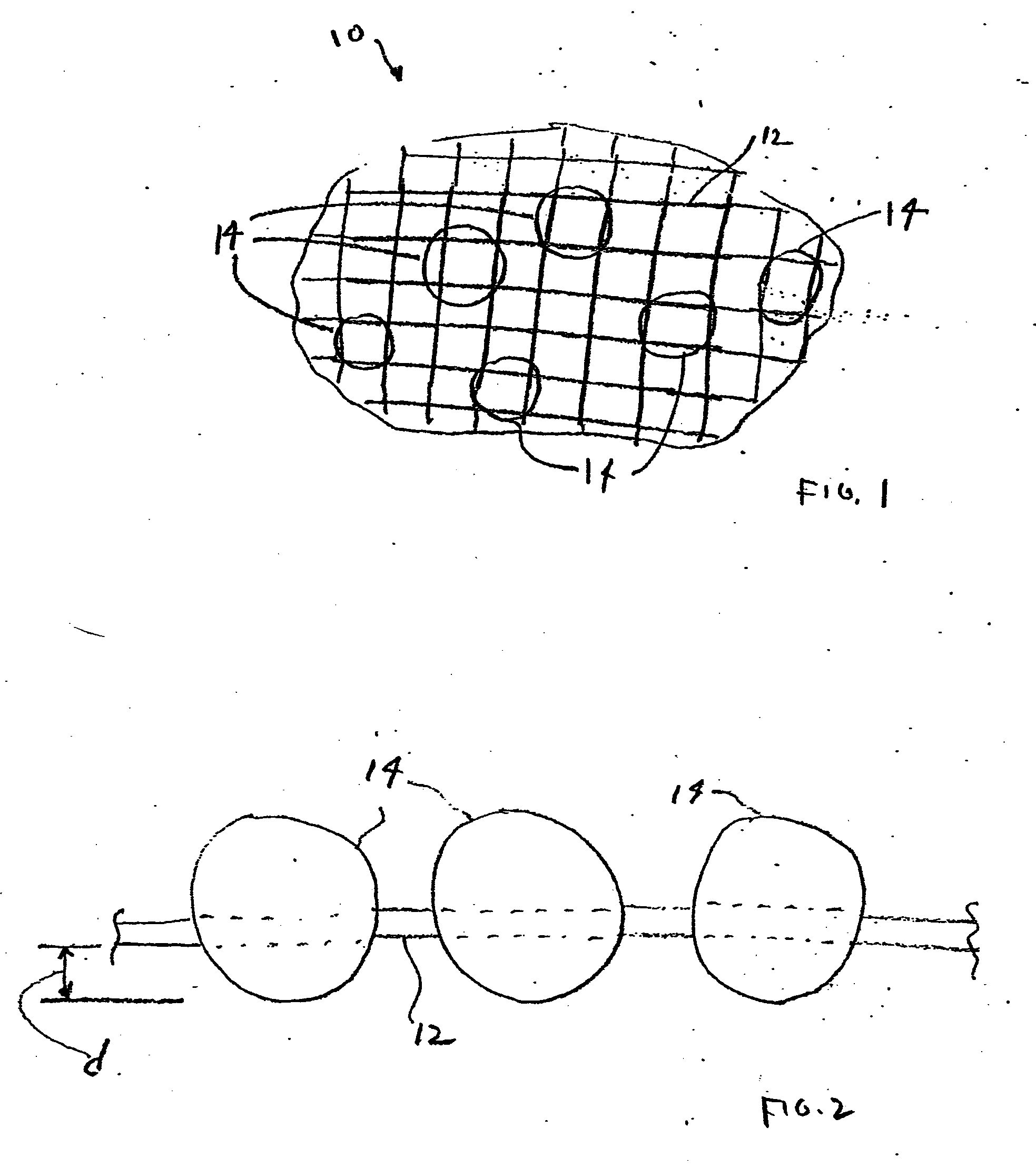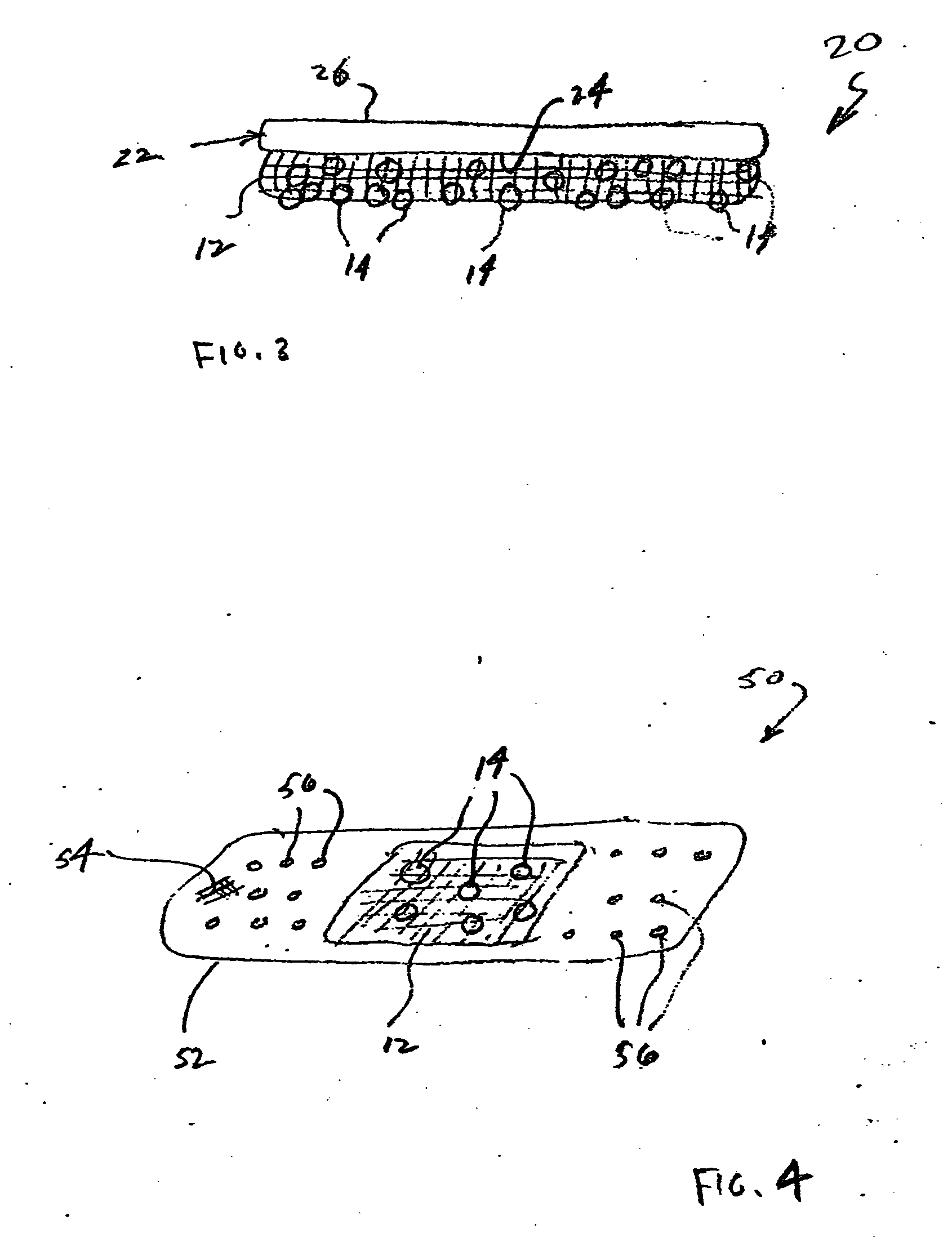Devices and methods for the delivery of blood clotting materials to bleeding wounds
a technology of blood clotting materials and wounds, which is applied in the direction of bandages, physical/chemical process catalysts, chemistry apparatuses and processes, etc., can solve the problems of insufficient immediate availability of equipment and trained personnel, excessive blood loss, and substantial bleeding, so as to facilitate the formation of clots, reduce the effect of exothermity and easy removal
- Summary
- Abstract
- Description
- Claims
- Application Information
AI Technical Summary
Benefits of technology
Problems solved by technology
Method used
Image
Examples
Embodiment Construction
[0026] Disclosed herein are devices and methods for delivering materials to wounds to promote the clotting of blood and the dressing of the wounds. The devices generally comprise expedients or apparatuses that can be applied to bleeding wounds such that the materials contact the tissue of the wound to minimize or stop blood flow of blood by absorbing at least portions of the liquid phases of the blood, thereby promoting clotting. One apparatus comprises a receptacle for retaining molecular sieve material in particulate form or oxidized cellulose material in particulate form therein. At least a portion of the receptacle is defined by a mesh having openings therein, and at least a portion of the particulate molecular sieve material or oxidized cellulose material is in direct contact with blood through the openings. As used herein, the terms “particle” and “particulate” are intended to refer to balls, beads, pellets, rods, granules, polymorphous shapes, and combinations of the foregoin...
PUM
 Login to View More
Login to View More Abstract
Description
Claims
Application Information
 Login to View More
Login to View More - R&D
- Intellectual Property
- Life Sciences
- Materials
- Tech Scout
- Unparalleled Data Quality
- Higher Quality Content
- 60% Fewer Hallucinations
Browse by: Latest US Patents, China's latest patents, Technical Efficacy Thesaurus, Application Domain, Technology Topic, Popular Technical Reports.
© 2025 PatSnap. All rights reserved.Legal|Privacy policy|Modern Slavery Act Transparency Statement|Sitemap|About US| Contact US: help@patsnap.com



